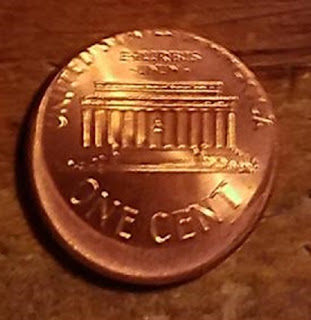What is an off center strike? An off center strike is when the coin is struck by the dies, but the design is not fully centered on the coin. An off center strike will have the same effect on BOTH sides of the coin and in most cases will change the shape from circular to oblong. This error happens when the coin is not fed into the striking chamber properly for one reason or another. These errors can be valuable and are a popular type of error with collectors. Values are based on a few different factors. How far off center the strike is, and whether or not the date is showing are important factors when trying to value the error. Of course, condition is also important. Minor off center strikes are very common and typically add little to no value. Typically a coin will have to be struck off center by 15% or more to add value.
What is a misaligned die strike? A misaligned die strike is when only one side of the coin is struck off center. This happens when the hammer die (obverse) and anvil die (reverse) are not lined up properly for one reason or another. Once again, minor versions of these are very common and add no value, but more extreme examples are scarce and can be quite valuable.
The visual below was created by Ken Peavey and shows the difference be tween a normal strike, an off center strike, and a misaligned die strike.
Below are user submissions of off center strikes.
Below are user submissions of misaligned die strikes. You will notice that most of these are very minor.
Even more rare are coins that are struck multiple times with at least one of the strikes off center. Below is a nice double struck coin with the second strike about 90% off center. Values for these can be very high.

















































